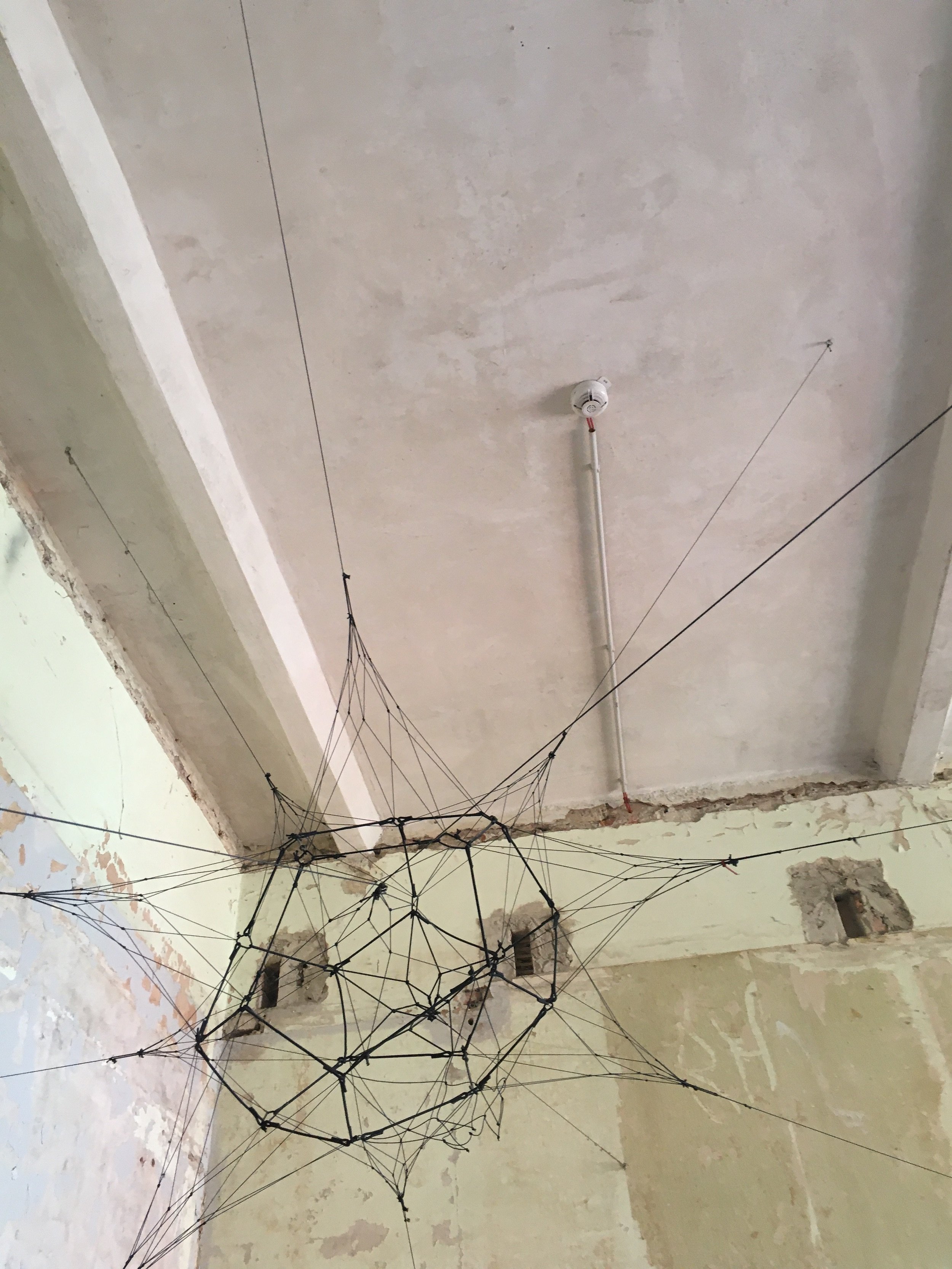Tomás Saraceno: Dream Dancer and Spider Whisperer
Tomás Saraceno’s studio consists not of a single room, but of many. In fact, it’s a whole house! It needs the space, too, with all the people who work here. There is a kitchen, workshops, storage rooms, offices and even a laboratory where very special “artists” live. To get to know them, however, we have to be patient for a while.
First we meet Gustavo, who shows us everything and starts directly in the garden. Here is a life-size model of a building that will be built in Denmark. Five polygonal mini-rooms are stacked here on top of and next to each other and look like they would be perfect for a playground. There are even nets stretched inside them, which can be hopped on.
Inside, Gustavo then shows us a much smaller model, on which we can see that instead of the five mini-rooms, 60 of them will end up being nested inside each other. Doesn't that fall over? No, but that's exactly the kind of project Tomás loves most – he’s also hung cubes in the sky in various places that looked like they were floating. Of course, everything is secure and fastened so that no one can get hurt. But the moment of surprise and amazement at these constructs, which don’t seem to care about gravity at all, is something the works all have in common. To make it work, artists, architects and engineers work together to dream, calculate and do lots of experiments. One of them is named Clare and is working on a square model as we scurry through the workshop.
But the mere illusion of hovering probably doesn't go far enough for Tomás – because he has also been trying for years to build flying objects that actually take off from the ground without being attached and without electricity or gasoline! The giant black objects look like hot air balloons, with which one woman has already flown almost 700 meters far and high. The air inside the balloons is hotter than the air outside. And because hot air always rises, the objects lift off the ground. Unlike the hot air balloons we sometimes see in the sky, however, the air is not heated by a fire, but only by the power of the sun. So Tomás doesn’t just take inspiration from the environment in his art – like the weightlessness of the clouds or the trajectory of the planets – he tries to find ways to live better without breaking the environment.
At the end of the tour, Gustavo takes us upstairs to the lab, where it is warmer than in the rest of the building. Many of the lab’s inhabitants come from the tropics – we have arrived in the realm of the spiders! Here we get to know Tomás personally, who himself is almost bursting with enthusiasm for the little animals that weave their elaborate webs here. In a huge frame, various spiders have built an entire city – large and small, dense and full of holes, white and golden spider webs are woven here on top of, underneath and next to each other (completely nested, a bit like the mini-rooms at the beginning). Tomás can even tell which spider was at work here by the appearance of the individual webs. But in the spider lab, people don't just think and talk about spiders, they also talk to them: Tomás unpacks a folder with different tuning forks, each of which mimics the sound of a particular insect when struck. When we carefully touch the spider’s web with the sounding fork, the sound penetrates to the web’s inhabitant in the form of vibration (because spiders don’t have ears). The spider thinks that an insect has entered the web and takes up the trail straight away in the direction of the tuning fork.
Tomás excitedly tells us about his dream that one day we will be able to talk to the spiders via vibrations (from cell phones, for example) and ask them everything we’ve always wanted to know about them. We are still a bit skeptical – whether this really works and whether spiders want to talk to us at all, when we humans are often dangerous to them? But in Tomás’ lab, no one touches a hair on their head – and if we look at the improbable things Tomás and his team have already built, they could certainly do it. Perhaps all scientists should dream a little more, then many impossible things would certainly become possible...





